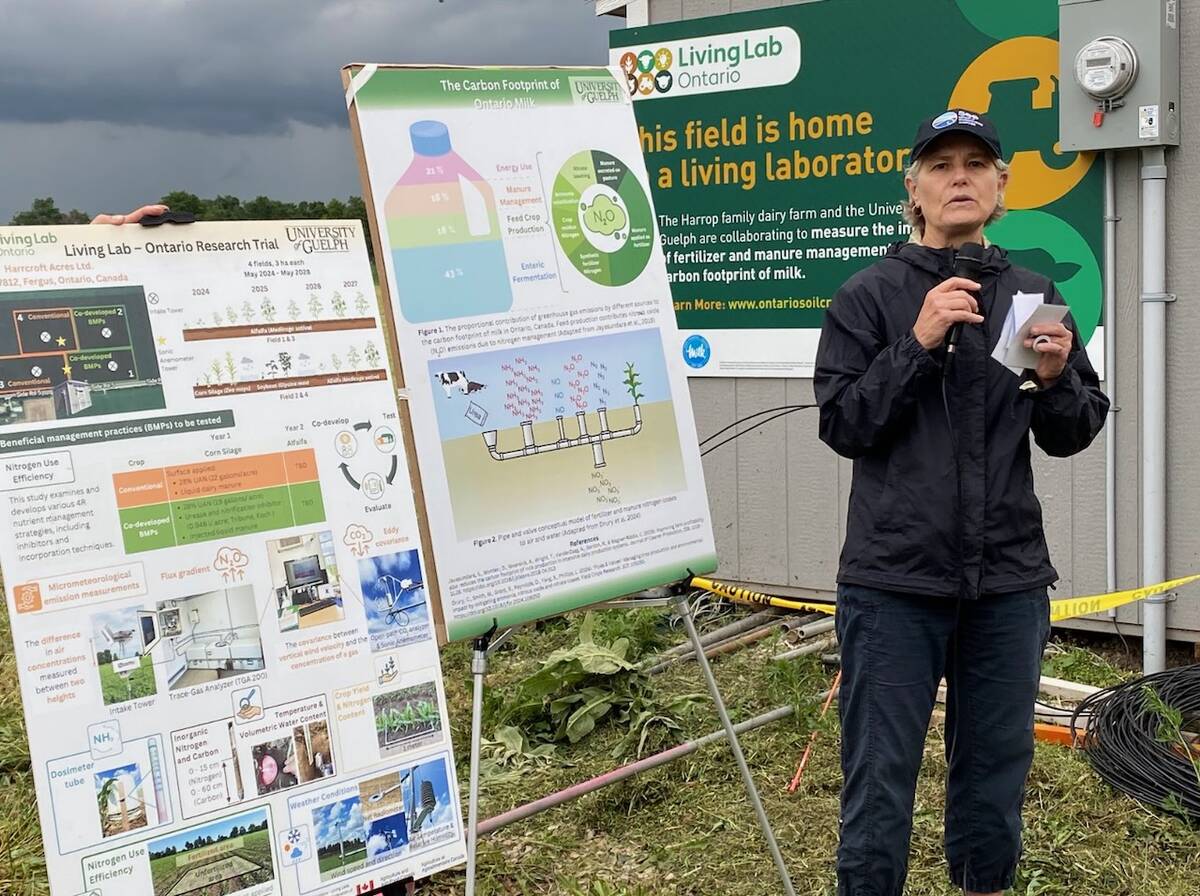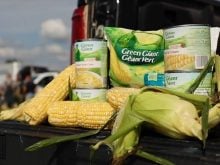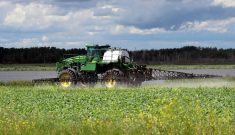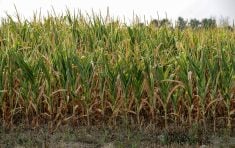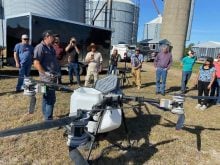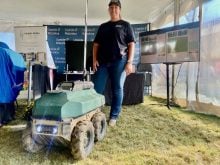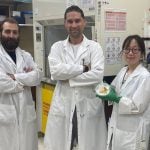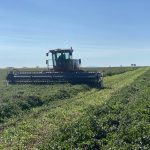A new Living Labs Ontario site on a working dairy farm will give researchers more insight into on-farm nutrient values.
A new monitoring site at Harrcroft Acres, home of the Harrop family’s dairy herd, gives the people who run the Living Labs ON project on 4R nutrient strategies at the University of Guelph’s Elora Research Station an on-farm set of data for their research.
“In the case of our specific project, we work closely with stakeholders such as AAFC, OSCIA, and other supporting partners in our research. The Living Labs ON project provided us an opportunity to replicate the measurements that we typically do at research stations such as Elora in a commercial farm setting,” said project lead Claudia Wagner Riddle. “We were very excited about this because this new monitoring site at the Harrcroft Acres farm provides a unique opportunity to connect directly with farmers and exchange ideas and knowledge. We can learn from each other, and that is the essence of the living labs approach.”
Read Also
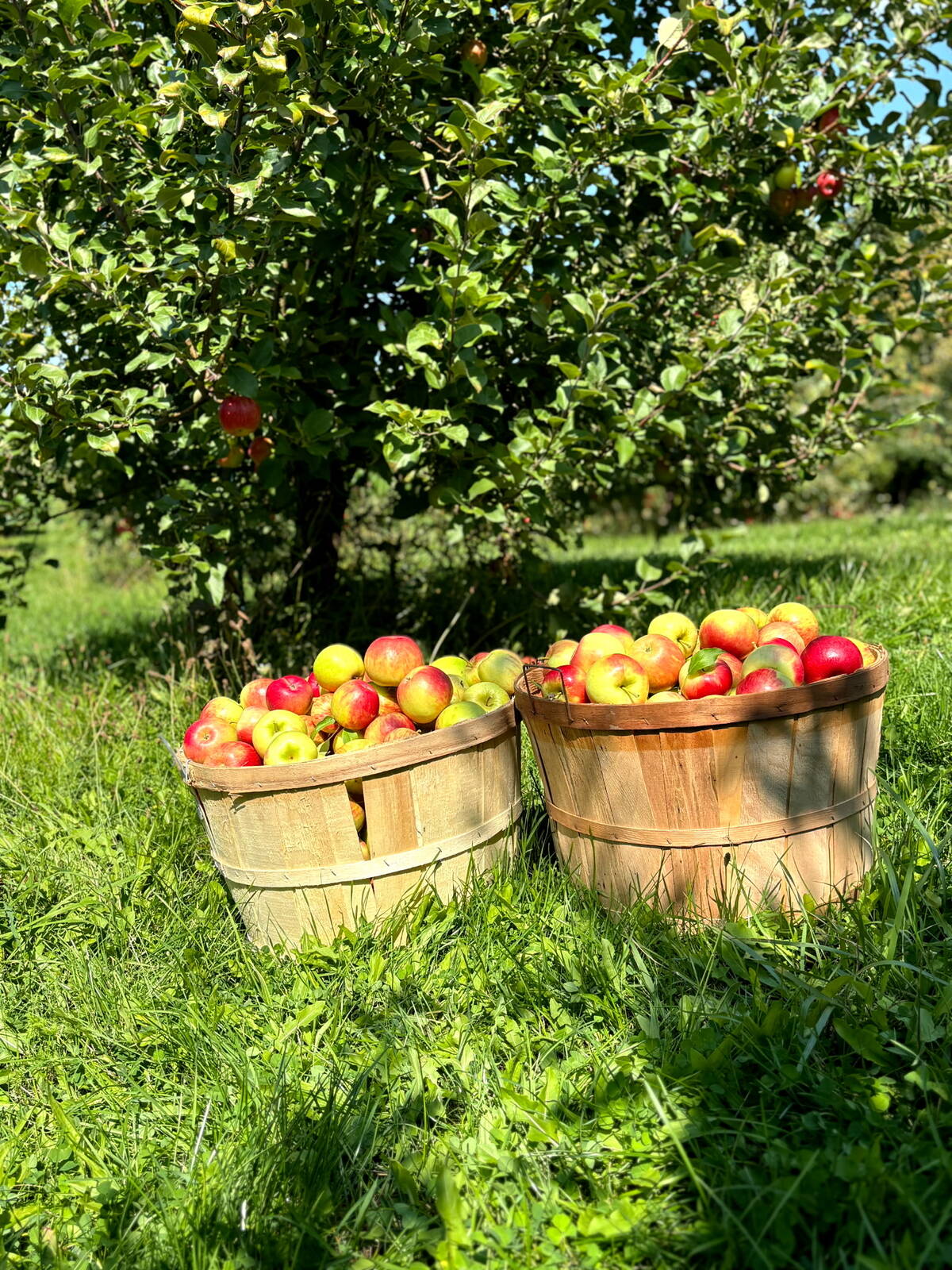
Farmers taking to social media to spread the word about the cost of farm thefts
A rash of farm thefts in Ontario have left farmers looking for new ways to help customers understand the cost of stealing goods.
She said the location, with its proximity to Guelph, made for an ideal spot to set up a Living Lab. She added the size and topography of the field were also added incentives. Most importantly, however, she noted that a producer that had a willingness and interest in long-term sustainability was what made Harrcroft Acres a viable option. Harrcroft Acres was a stop on a Wellington Ontario Soil and Crop Improvement Association tour this summer.
The study examines and develops various 4R nutrient management strategies through agronomic field trials and greenhouse gas measurements with a goal of enhancing nitrogen use efficiency while lessening the environmental impact on corn production. The project compares grazed and ungrazed cover crops within a cash crop rotation in Ontario while looking to enhance soil health and reduce the need for inputs.
A lab station, about the size of a small shed, is built on the site with measurement tools that test the air levels for nitrogen to provide insight into which field trials are performing most efficiently.
“We are seeing how improved nitrogen management, such as the use of enhanced efficiency fertilizer, can reduce nitrogen losses to the environment while also increasing yield and profits,” she said.
With the project in the early stages, she says her team are looking towards a long-term goal of developing “new practical knowledge that will help the dairy sector to move towards net-zero goals while also being a thriving sector.”
The Harrop family has called Harrcroft Acres home for four generations. The 370-acre dairy operation milks 125 purebred Holsteins and raises all replacement animals.
Janet Harrop says she and her husband have been running the farm for 40 years, welcoming her son and daughter-in-law to the operation 10 years ago.
“We have a crop rotation of alfalfa, wheat, soybeans, and corn and use cover crops/nurse crops after wheat and to establish our alfalfa fields using minimal tillage practices to support continuous crop cover, reduce soil disturbance, and promote long-term soil resilience,” she said. “Our parents relocated to Fergus because of the fertile soil. Our farm has some of the most productive soil in all of Canada. We see this resource as a fundamental asset to our business that we need to understand better.”
Harrop says that as a livestock producer with their organic amendments in the form of manure, she sees the value in farms that have a diverse cropping rotation, grow their crops to feed their livestock, and use their own nutrients in the form of manure to fertilize the crop.
“Showing the full carbon cycling of crops through livestock hasn’t been researched a lot, and I thought it important to understand the impact of the practices on emissions. It is important to be part of the solution,” she said.
The project has already shed light on the farm’s ability to improve sustainability. Last year’s corn crop showed a reduction of UAN application of 15 per cent, paired with a nitrogen inhibitor, resulting in a yield increase of 12 per cent. She said this was significant from a yield perspective and a crop input cost perspective.
Moving forward, she said the operation plans to continue to cut back on UAN on all cornfields, and they will continue with the added nitrogen inhibitor.
Each living lab is operated to co-develop and test innovative technologies and on-farm practices to reduce greenhouse gas (GHG) emissions and sequester carbon in real-world conditions. Ontario is committed to a five-year innovation project with 14 locations across the province, including the site just outside Fergus.


